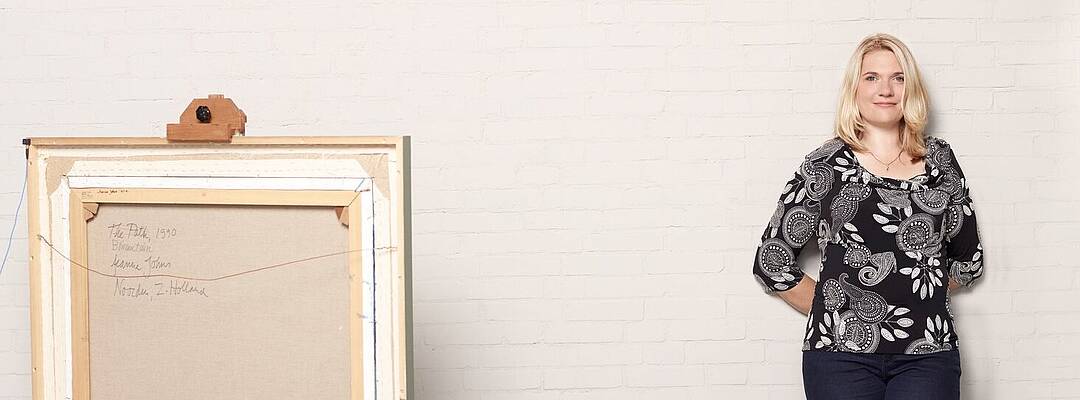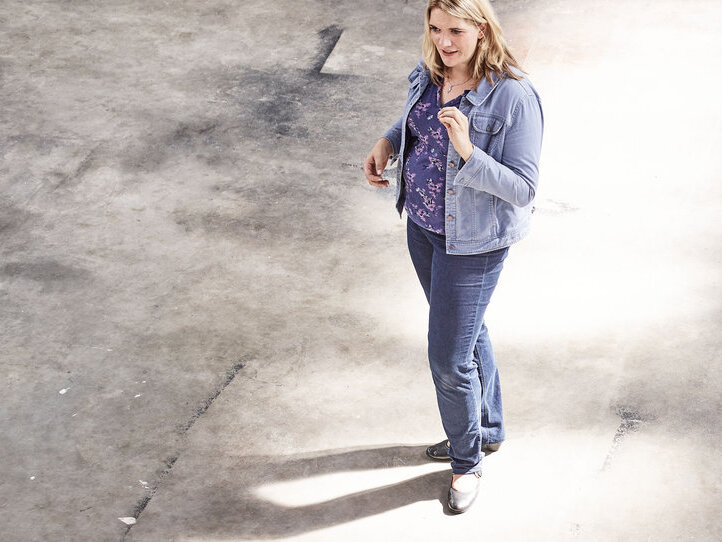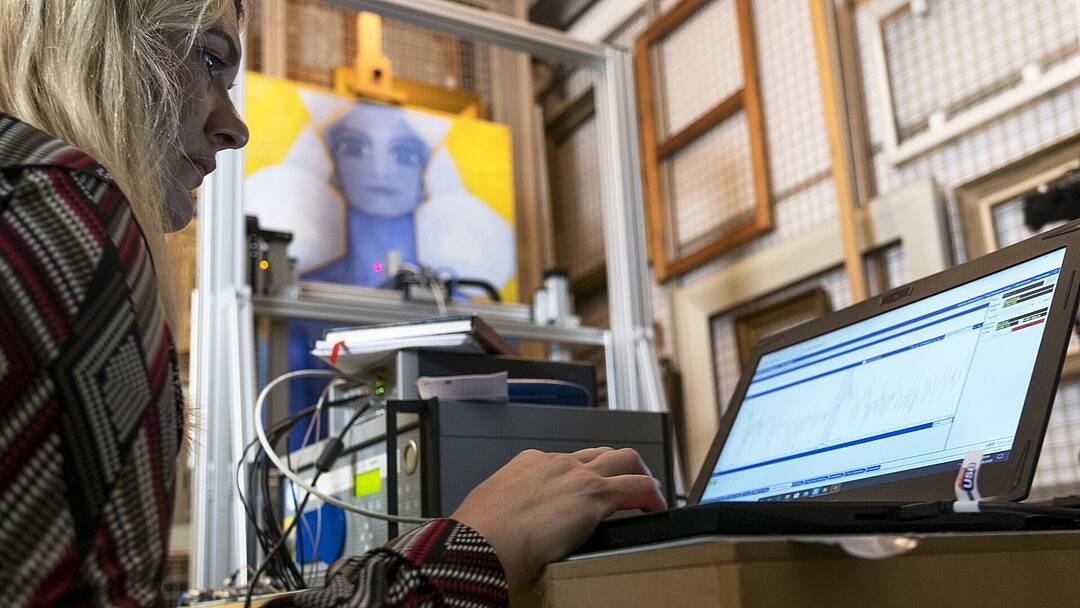Kerstin Kracht is one of Europe’s leading experts in vibration engineering. She is spending one year as a visiting professor at TU Berlin to conduct research on the mechanics of art works and cultural objects.
It was a delightful and elegant interlude. During her talk at the PACCIN conference delivered to museum experts in 2019 in Amsterdam, Kerstin Kracht arranged for a professional dance group from Hamburg to perform a salsa and hip-hop routine. The aim was to make the audience aware of a problem which had at best been undervalued and more probably simply ignored by the museum world: Namely the risks art works and cultural assets face from vibrations and impacts. Initially the audience leaned back in their chairs and enjoyed the interlude as a welcome diversion from the marathon of talks. But sooner or later someone must have sensed that the four dancers were not there merely to amuse the audience. “Of course they weren’t,” says Professor Dr.-Ing Kerstin Kracht, betraying her amusement at the idea. “I was measuring the vibrations produced by the dancers on the ground and on the podiums. This data was simultaneously displayed in diagrams on a large screen.
Museums as event locations
The assembled international community of museum directors, technicians, art dealers, scientists and restorers were able to deduce from the violent amplitudes the kind of "torts" they are exposing the works of da Vinci, Michelangelo, van Gogh, Chagall and Pollock to whenever museums are transformed into event locations or when irreplaceable paintings and sculptures are dispatched around the world. “Even the smallest jolts experienced by art treasures during transportation can have damaging effects,” says Kracht. In answer to my question concerning the audience’s reaction to this demonstration/interlude, she answers dryly: “Divided. On the day, some appreciated and valued my work, while others saw my presentation as inappropriate. But nobody could ignore the evidence provided by this little interlude.”
Kerstin Kracht did her degree and doctorate at TU Berlin. In 2014 she left the University to gain experience beyond academia to help her develop her passion for protecting art and cultural assets from exposure to vibrations and impacts. Now she is returning to TU Berlin at the start of winter semester 2020/2021 as a visiting professor as part of the University’s “Joint Programmes for Female Scientists & Professionals” funding initiative. The initiative seeks to advance alternative career paths for women and provide women working in industry the opportunity to share their experience with students and junior scholars.
A niche area of expertise
For the past 16 years, Kracht has been researching new methods to protect artworks and cultural assets from the impacts and vibrations experienced during transportation - very much a specialist area. Today she is part of a very small group of sought-after experts in Europe. In 2009, she worked with a Berlin company to develop a vibration isolation mount for the world-famous bust of Nefertiti in the Neues Museum Berlin and in 2019, working with the same company, she developed a vibration isolation mount for the Golden Panel from Lüneberg, an altarpiece weighing 700 kilograms. She laid the foundations for her future career and expertise while studying physical engineering at TU Berlin. “After completing my doctorate, however, I came up against barriers which I would not have overcome had I carried on researching at university. I needed the kind of data and experience that you can only get from working in the field and not from databases,” she explains.
Going it alone
In 2014 she decided against the offer of a junior professorship and worked for one year as a math and physics teacher at a private school in Schwerin, while also working as a freelance lecturer, teaching restoration and engineering students at a number of universities in Berlin and Hamburg. It was her subsequent experience of working as a research and development engineer in a test lab for prototypes and packaging in Hamburg that finally led her to decide to set up her own business as an engineer for vibration engineering and structure dynamics in 2017. All of these career developments have helped make her the expert in vibration engineering that she is today. Her career path has been anything other than easy, however. She worked through all the difficulties and imponderables she faced, made none the easier by being a single mother, because she wanted to achieve change.
Regarded as a risk to businesses
In addition to her immense technical expertise, useful contacts and passion for science, Kracht can also share with her students and junior scholars her experience of life as a freelance engineer, single mother and free spirit. This experience is worth so much more than the naive marketing jargon you sometimes hear at job fairs. Her experience of life is grounded and reflects the difficulties she has had to face. Despite all protestations to the contrary, her experience has shown her that single mothers are regarded as a risk by companies; that expressing a wish to work part-time sees you rejected at an early stage of the appointment process, even if the option of part-time work is included in the job posting. When asked if these have been bitter realizations for her, she answers simply: “Nope,” and laughs. Talking to her, you realize that Kracht is someone who likes to laugh. She always knew straight off that she had no interest in working for companies that think like this.
A lot of people know about chemistry but few know about forces
A healthy appreciation of her own abilities is one of Kracht’s strengths. Her analytical approach to problems also prevents her from losing heart and when things don’t go as expected, she is quick to seek other options. From a technical point of view, things are also often not as she would have expected - for example, the negligible role engineering sciences in general, particularly vibration engineering, play in the work of museums. “Restorers know a great deal about chemistry but little about physical forces, especially dynamic forces,” explains Kracht. However, knowledge of these areas is essential for the storage of exceptional paintings and sculptures if they are to be preserved. The attitude “That’s how we have always done things” further prevents innovation and means that sustainable packaging is scarcely used in art logistics in Germany at the moment. Disposable packaging made of wood continues to end up in the rubbish when artworks are returned from loans.
Equipping transport boxes with scientific technology
Kracht is taking a stand against these practices. For her as an engineer it is important to act with responsibility. This explains why she sought out a company which had developed its own re-usable transport boxes for oil paintings when looking to create a shock-resistant and vibration-isolated method of packaging artworks during transportation. “I want to use my know-how to help companies which pursue environmentally sustainable operations. The very first transport box for oil paintings introduced by a Dutch company based in The Hague in 1994 is still in use today,” explains Kracht. This really impresses her. And when you listen to her, you can hear how proud she is of her work with this company. Not least, because she has succeeded in applying her scientific knowledge of the vibration behavior of oil paintings to the area of product development.
This has made it possible to reduce vibrations and impacts when storing oil paintings in the company’s transport boxes.
After six years working in the field, Kracht possesses a wealth of contacts, data and experience which she can draw on for research during her one-year visiting professorship at TU Berlin. Her contacts include museums, such as the British Museum in London, the Kunstmuseum Den Haag and the Kunsthalle in Mannheim.
Kracht is researching Piet Mondrian’s oil painting “Evolution”
Working with the Kunstmuseum Den Haag, Kracht will conduct research into fatigue fracture and vibration behavior in oil paintings painted on textiles where zinc soap has formed in the paint. A number of important works, including Piet Mondrian’s “Evolution” of 1911 housed in the Kunstmuseum Den Haag or Max Beckmann’s “Fastnacht” of 1925 in the Kunsthalle Mannheim, show signs of delamination, in other words flaking and peeling paint. Zinc soap formations have been identified in the paint, which could account for this process. Delamination reacts very sensitively to dynamic forces. In further studies, Kracht will examine the impacts of such dynamic forces to further develop measures for preventative conservation. TU Berlin is funding her research into the the aging of artworks through its “Joint Programmes for Female Scientists & Professionals” initiative.
If Kerstin Kracht’s professional life is about limiting the effects of swinging motions, her private life is all about setting them free - she is an enthusiastic salsa dancer!
Author Sybille Nitsche



